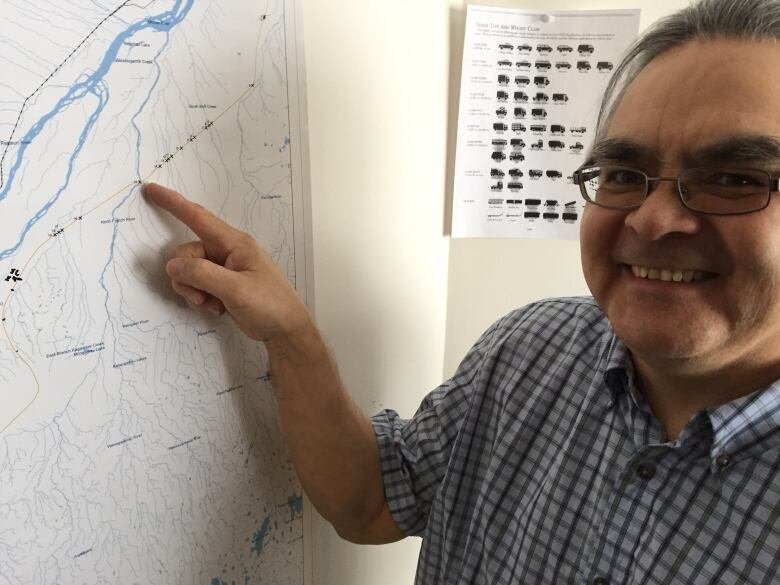Season for critical northern Ontario ice road getting shorter, says road builder
Climate scientist says 90 per cent of ice roads would not be sustainable with 1.5 C a temperature increase

Every year, the season for a critical ice road in Ontario's far north appears to get shorter, says Peter Wesley.
Wesley is the director of properties management for the Moose Cree group of companies, which builds the 170-kilometre Wetum Road every winter.
The ice road connects the community of Moose Factory, along the James Bay Coast, to the provincial highway system. It allows people and commercial vehicles to more easily reach larger centres to the south, such as Timmins, North Bay and Sudbury.
Wesley said the road needs 45 centimetres of ice to support light personal vehicles, and 76 centimetres for large commercial vehicles.
He said the road was not yet ready for heavy vehicles as of Jan. 12.
More snow than normal in the region has created less than ideal conditions for the road.
"It's making it challenging this year because it's acting like an insulator," Wesley said about the snow.

In addition to a later than normal start, Wesley said he expects the ice road to close earlier than normal as well.
"You have some warm spells in February and March, so I'm guessing that's going to impact the road as well," he said.
"I think we were open by now last year, and then, I think we might have closed the third week in March initially. Then we got another little cold snap. So we opened it up for a few more days."
The James Bay ice road that runs from Moosonee to Attawapiskat is also slow to open this season, as is the road that runs across Lake Temagami to the First Nation community on Bear Island.

Sapna Sharma, an associate professor with York University's biology department, said a 1.5 C increase in average temperatures due to climate change would mean 90 per cent of current ice roads would no longer have enough ice to be sustainable.
"And with three degrees Celsius warming, 99 per cent of ice roads would not be thick enough for transport trucks," she said.
Sharma and her colleagues have studied how climate change affects lake ice cover.
"What we've noticed is that the seasons are shorter," she said.
"The season of ice duration is shorter with later ice-on dates and later earlier ice-off in the spring."
Sharma said she recently received a grant to study transportation infrastructure in the far north, working with Indigenous communities to find ways to mitigate the effects of climate change.
"For example, removing snow from the ice can help promote ice thickness and increase ice growth," she said.
But even with ways to promote ice growth in the short term, Sharma said the warming needed to make most ice roads unviable will happen within this century.
With files from Erik White and Kate Rutherford












_(720p).jpg)


 OFFICIAL HD MUSIC VIDEO.jpg)
.jpg)



























































































